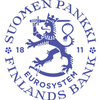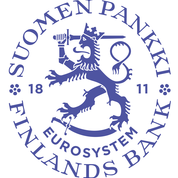Financial system already feeling effects of higher interest rates

Interest rates were low for a long period, but this came to an end last year. Although interest rates have risen at an exceptional pace, the current level is not especially high by historical standards. “The rapid and steep rise in interest rates has led to an increase in financial stability risks in Finland, because household indebtedness grew substantially when interest rates were low,” says Deputy Governor of the Bank of Finland Marja Nykänen.
Higher lending rates are putting households under pressure. Households that are highly indebted may be under particular strain in the coming months, as both loan servicing and other daily costs are rising at the same time. “A loan taken out when interest rates were low can turn out to be excessively large, even where a household's financial standing ought to be sufficient for managing repayments. Households need to be able to pay other bills, too. If households cut back significantly on their spending, the Finnish economy could weaken more than expected,” says Nykänen.
The rise in interest rates has reduced house sales in Finland, and residential property prices have fallen. The decline in property prices during a downturn is typically sharper when preceded by a rapid, debt-driven rise in prices. This appears to be the case now as well: prices have dropped the most in the largest urban centres, where house prices were climbing the fastest and house sales were financed by larger than average loans.
Rising interest rates can expose risks that were taken in times of low interest rates and which present threats to the stability of the financial system. These risks became a reality during the spring in the United States and Europe, when three US banks failed due to excessive risks and Swiss bank Credit Suisse, which had long been in difficulty, was sold to a competitor in a deal supported by the authorities.
“The capital position of Finnish banks has remained strong, and they do not appear to have the same kind of balance sheet and liquidity risks as the banks that ended up in difficulty. Nevertheless, attention must also be paid in Finland to bank funding risks and the sufficiency of banks’ liquidity,” Nykänen notes.
International regulatory reform has strengthened the resilience of banks. Additional capital requirements have been set for Finnish banks, allowing system-wide risks to be covered. Finnish banks are also well equipped to meet the growing risks in the Nordic housing and real estate markets.
The recommendation of a working group set up by the Ministry of Finance for a mandatory cap on debt service-to-income (DSTI) is important for financial system stability. The requirement would impose an upper limit on how much of a borrower's income can be taken up by debt servicing costs. At the European level, completion of the EU banking union would be a key step for unity across Europe. Confidence in Europe’s banking system would be further strengthened by a common European deposit insurance scheme (EDIS). This should be pursued in a determined and resolute manner.
“The spring turbulence that we saw in the banking sector was a reminder of how quickly the situation can escalate if confidence in banks is shaken. Financial system stability is established through persistent work. A stronger cap on household borrowing in Finland and common protection for bank deposits across Europe would be key steps,” says Nykänen.
Keywords
Images
Links
About Suomen Pankki
The Bank of Finland is the national monetary authority and central bank of Finland. At the same time, it is also a part of the Eurosystem, which is responsible for monetary policy and other central bank tasks in the euro area and administers use of the world’s second largest currency – the euro.
Subscribe to releases from Suomen Pankki
Subscribe to all the latest releases from Suomen Pankki by registering your e-mail address below. You can unsubscribe at any time.
Latest releases from Suomen Pankki
En inhemsk lösning för omedelbara betalningar skulle öka funktionssäkerheten och konsumenternas valfrihet8.5.2025 11:30:00 EEST | Pressmeddelande
Finländarna måste ha tillgång till förmånliga, mångsidiga och tillförlitliga betalningssätt som fungerar säkert också under exceptionella omständigheter. En lösning för omedelbara betalningar som baserar sig på kontoöverföringar i real tid skulle öka vår förmåga att hantera systemen för betalning och erbjuda konsumenterna ett välkommet alternativ.
Kotimainen pikamaksamisen ratkaisu lisäisi toimintavarmuutta ja kuluttajien valinnanvapautta8.5.2025 11:30:00 EEST | Tiedote
Suomalaisilla tulee olla käytössään edullisia, monipuolisia ja luotettavia maksutapoja, jotka toimivat turvallisesti myös poikkeustilanteissa. Reaaliaikaisiin tilisiirtoihin perustuva pikamaksuratkaisu lisäisi kykyämme hallita maksamisessa käytettyjä järjestelmiä ja tarjoaisi kuluttajille tervetulleen vaihtoehdon.
A Finnish instant payment solution would improve resilience and consumer choice8.5.2025 11:30:00 EEST | Press release
People must have access in Finland to inexpensive, versatile and reliable methods of payment and these must function securely even in exceptional situations. An instant payment solution based on real-time credit transfers would enhance our ability to govern the systems used in making payments and would offer consumers greater choice.
Inlåningen från hushållen ökar8.5.2025 10:00:00 EEST | Pressmeddelande
Vid utgången av mars 2025 var inlåningen från de finländska hushållen (112,1 miljarder euro) 3 miljarder euro större än vid motsvarande tid för ett år sedan. Inlåningen har senast varit större 2022. I juli 2022 var inlåningen den största genom tiderna, dvs. nära 114 miljarder euro. Vid utgången av mars 2025 var 68,4 miljarder euro av inlåningen från hushållen inlåning över natten[1], 14,9 miljarder euro tidsbunden inlåning och 28,8 miljarder euro placeringsdepositioner[2].
Kotitalouksien talletuskanta kasvussa8.5.2025 10:00:00 EEST | Tiedote
Maaliskuun 2025 lopussa suomalaisten kotitalouksien talletuskanta (112,1 mrd. euroa) oli 3 mrd. euroa suurempi kuin vuosi sitten vastaavana aikana. Talletuskanta oli viimeksi suurempi vuonna 2022. Vuoden 2022 heinäkuussa se oli kaikkien aikojen suurin eli lähes 114 mrd. euroa. Maaliskuun 2025 lopussa kotitalouksien talletuksista 68,4 mrd. euroa oli yön yli -talletuksia[1], 14,9 mrd. euroa määräaikaistalletuksia ja 28,8 mrd. euroa sijoitustalletuksia[2].
In our pressroom you can read all our latest releases, find our press contacts, images, documents and other relevant information about us.
Visit our pressroom

